 |
June 27, 2000 NASA - a jewel or thorn in the crown? by Stephen Bassett Washington, DC – Look hard at the long, strange trip the human race has taken up from the caves at Olduvai Gorge. Savagery and animalism, conquest and war, subjugation and slavery, exploitation and injustice, brutality and pain – all there in plain view. Twisting and coursing amidst this history, however, is a process that many have struggled mightily to define and project forward in time. Where is this species going and why does it want to get there? As you sift through events and achievements that seem to impact this process, you notice that some stand out - a few so extraordinary they amount to jewels in the crown of human experience. Here are some examples: the blunting of old world imperialism by the emergence of the Christian faith; the consolidation of Arab and middle eastern factions under Islam; the U. S. Constitution; the Magna Carta; the Marshall Plan and the peace waged after World War II; emergence of science in democratic, ancient Greece; the simultaneous discoveries of relativity and quantum mechanics; and the structures at Giza.
The stage was set for a deepening nihilism build on hopelessness, which, thanks to the media’s power to spread it around, would envelope the world like Carl Sagan’s nuclear winter. Humans, having been repeatedly disappointed by the failure of endtime predictions to pan out, had seized the initiative, building their own apocalypse, bomb by bomb. After the annus horribilis that was 1968 and for the next 20 years, the wondrous discoveries from our space program provided good reason to turn away from the madness of MAD and give the future some respect. NASA’s accomplishments got many a young man and woman through the nightmare of the Cold War. I was one.
One job put me inside the portable tower. The bottom structure was designed like a ship with watertight doors and compartments - built this way because of the cooling torrents of water raining down at launch. I would take the elevator to the top of the tower and look out over the Cape. In the distance were other pads. Across two oceans further east a war was raging. I remembered climbing under my desk in elementary school during nuclear attack drills in the 50’s. It was 1966. I was young, fearful and confused. I didn’t know much, but I knew there were rockets which carried 100 megaton hydrogen bombs and there were rockets which would carry us to the moon. Somehow the existence of the latter made the former easier to bear. The exploration of space was a damn good reason to be alive. It still is, but something has happened to our space agency, something bad. Like many others who have learned this, I take no pleasure in pointing it out.
The 1958 Space Act
While there were predecessor entities, the modern space agency
we know and love was formed by the National Aeronautics and Space Act of 1958. The foundation is described in the second section,
Declaration of Policy and Purpose. Paragraph
(b) is critical.
Section 201 is entitled National Aeronautics and Space Council. The important portions are below:
Sec. 201. (a) There is
hereby established the National Aeronautics and Space Council (hereinafter called the
"Council") which shall be composed of--
(1) the President (who shall preside over
meetings of the Council); (2) the Secretary of State; (3) the Secretary of Defense (4) the Administrator of the National
Aeronautics and Space Administration; (5) the Chairman of the Atomic Energy
Commission; (6) not more than one additional member appointed
by the President from the departments and agencies of the Federal Government; and (7) not more than three other members appointed
by the President, solely on the basis of established records of distinguished achievement
from among individuals in private life who are eminent in science, engineering,
technology, education, administration, or public affairs. (d) It shall be
the function of the Council to advise the President with respect to the performance of the
duties prescribed in subsection (e) of this section. (e) In conformity with
the provisions of section 102 of this Act, it shall be the duty of the President to-- (1)
survey all significant aeronautical and space activities, including the policies,
plans, programs, and accomplishments of all agencies of the United States engaged in such
activities; (2)
develop a comprehensive program of aeronautical and space activities to be conducted
by agencies of the United States; (3)
designate and fix responsibility for the direction of major aeronautical and space
activities; (4)
provide for effective cooperation between the National Aeronautics and Space
Administration and the Department of Defense in all such activities, and specify which of
such activities may be carried on concurrently by both such agencies notwithstanding the
assignment of primary responsibility therefore to one or the other of such agencies; and (5) resolve differences arising among departments and agencies of the United States with respect to aeronautical and space activities under this Act, including differences as to whether a particular project is an aeronautical and space activity. What does this mean? When NASA was created, there was a specific provision that required any aspects of the exploration of space that impacted national defense and security would be deferred to the aegis of the Department of Defense. It was this provision that led to the popular misconception that NASA was a sub-agency of the DOD. It is not. It is a civilian agency with a whopper of a national security provision.
The UFO/ET research effort has clearly determined that any evidence or events pointing toward an extraterrestrial explanation were and are considered matters of national security and defense by our government. Therefore, what, if anything, NASA might or might not do with respect to such evidence or events would be determined by the DOD. The DOD would decide whether such information was disclosed to the public. If NASA wanted it otherwise, only the President of the United States could alter the decision. From 1958 to 1973 the presidents presiding over the National Aeronautics and Space Council were Eisenhower, Kennedy, Johnson, and Nixon. There is a consensus Eisenhower was briefed appropriately on the extraterrestrial presence and the other three partially briefed. Whatever turned up during those 15 years, the elected executive of the nation may have known about it. Decisions to not disclose were jointly arrived at between the DoD and NASA. On April 18, 1973, four months after the last Apollo flight and 16 months before the resignation of Richard Nixon, the National Aeronautics and Space Council was abolished and presidential influence was undercut. Since that time the serving presidents have been Ford, Carter, Reagan, Bush, and Clinton. Of these, Ford, Carter and Clinton were likely not briefed on the extraterrestrial presence and Reagan was incompletely briefed. Consequently, for 14 of 27 intervening years the President of the United States was out of the loop regarding the UFO/ET reality and unable to address the NASA dilemma. For eight of those years a sitting president was a partially informed pawn to inside entities with their own agendas. The person who cast the largest shadow over this entire period, as CIA Director, Vice President and President, was George H. W. Bush, and the National Aeronautics and Space Administration was the victim. April of 1973 was a pivotal moment in the unfolding saga of the disclosure process. From that point forward under greater and greater stress, NASA was torn between its mandate as a civilian scientific institution and its obligations under the 1958 Space Act to the Department of Defense. What has come to pass? Evidence of trouble is everywhere.
This sordid mess can be summed up in one paragraph.
Back to Article Index Copyright © 2000 Stephen Bassett |
| "April of 1973 was a pivotal moment in the unfolding saga of the disclosure process. From that point forward with greater and greater stress, NASA was torn between its mandate as a civilian scientific institution and its obligations under the 1958 Space Act to the Department of Defense." | |

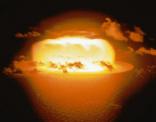
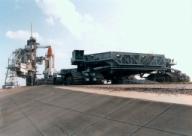 During
the summers between
college years I worked at the Kennedy Space Center as an intern.
During
the summers between
college years I worked at the Kennedy Space Center as an intern.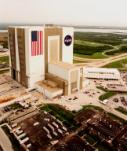
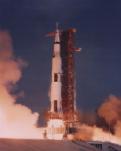
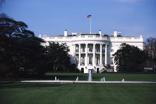 The President of the United States had
considerable influence over the activities of NASA.
The President of the United States had
considerable influence over the activities of NASA. The National Aeronautics
and Space Administration is a brilliant creation of human kind with spectacular achievements and noble purpose.
The National Aeronautics
and Space Administration is a brilliant creation of human kind with spectacular achievements and noble purpose.